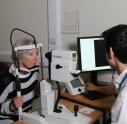Researchers were able to differentiate neuromyelitis optica from multiple sclerosis (MS) on MRI scans of patients’ gray matter thanks to a machine learning approach.
Neuromyelitis optica spectrum disorder (NMO), or Devic's disease, is often confused for MS and affects mainly the spinal cord and the nerves to the eyes. NMO is similar to MS in that it can relapse (as the nerves are attacked) and remit (improve) but the course and treatment of the condition is different.
Using an algorithm called random forest – considered one of the best among classification algorithms for its ability to classify large amounts of data with accuracy – the researchers were able to automatically classify the two patient groups accurately 74% of the time.
The algorithm worked by analysing biomarkers extracted from 144 MRI scans: 90 participants (25 patients with MS, 30 patients with NMO, and 35 healthy controls were studied in Tehran, Iran, and 54 (24 patients with MS, 20 patients with NMO, and 10 HCs) in Padua, Italy.
Dr Arman Eshaghi, first author, found the algorithm was able to correctly differentiate between healthy controls and MS patients in 92% of cases, and correctly differentiate between patients with NMO and healthy controls in 88% of cases.
Dr Eshaghi said: “This study is only a first step and encourages more research in clinician-led machine learning and artificial intelligence. In future, these automatic methods could support and assist clinicians in making clinical decisions.”
The team was led by BRC supported Professor Olga Ciccarelli.
The findings, published in Neurology, can be read in full here.




